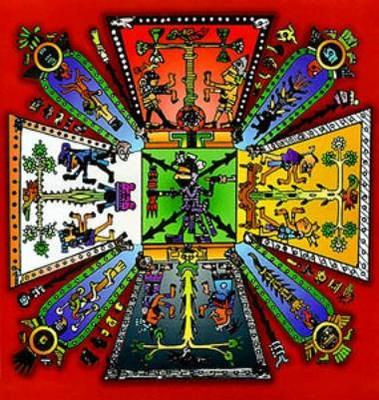My New Company奇瀚資訊維修工作室
奇瀚資訊維修工作室
http://chihan.idv.tw/chihan
奇瀚資訊維修討論區
http://chihan.idv.tw:8080/dz6
大台北地區皆可喔~~
 This is the flight and Departure Date that I selected .
This is the flight and Departure Date that I selected .
 The 1st day: Departure from Taipei to Tokyo.
The 1st day: Departure from Taipei to Tokyo.The 2nd day:To visit Tokyo Disney Land, and check the openning time and closed time
 The 3rd day:To visit Shibuya.
The 3rd day:To visit Shibuya.

The 4th day:To visit Shinjuku

The 5th day:To visit Asakusa .

 Q1: When did Maya reach its highest achievements?
Q1: When did Maya reach its highest achievements? 

 The Maya had their own calendar, their own writing system, and kept records of births, marriages and military victories. They also created literature, such as the famous Popol Vuh and the Chilam Balam, and were excellent mathematicians. One of the greatest achievements of the Maya is in this area they invented the zero.
The Maya had their own calendar, their own writing system, and kept records of births, marriages and military victories. They also created literature, such as the famous Popol Vuh and the Chilam Balam, and were excellent mathematicians. One of the greatest achievements of the Maya is in this area they invented the zero. The Maya developed positional numeration, which had not even been discovered by the Romans. Their writing was in the form of a picture language (pictographs) carved into stone, painted on walls, bark, deerskin and pottery. As further examples are being discovered, these pictographs are still being deciphered and translated so that knowledge of the Maya grows every day.
The Maya developed positional numeration, which had not even been discovered by the Romans. Their writing was in the form of a picture language (pictographs) carved into stone, painted on walls, bark, deerskin and pottery. As further examples are being discovered, these pictographs are still being deciphered and translated so that knowledge of the Maya grows every day.



 Physically, the Maya were usually short in height with wide heads and sparse, straight hair. They had wide and prominent cheek bones with well defined lips and slanting eyes. They tied two wooden planks on the front and back of the heads of newly born babies, which produced the classic Maya profile.
Physically, the Maya were usually short in height with wide heads and sparse, straight hair. They had wide and prominent cheek bones with well defined lips and slanting eyes. They tied two wooden planks on the front and back of the heads of newly born babies, which produced the classic Maya profile.
The clothing of the different classes can be seen in sculptures and clay figures from the Maya period. They made their clothes with cotton and animal skins. For decoration, they wore enormous feather headdresses, necklaces, earplugs, noseplugs, rings and bracelets. For their jewellery, they used jade, shells, bone, obsidian, gold and copper.
The Maya ruling class included high priests and noblemen. The majority of the population were farmers, craftsmen, warriors and merchants.
Q4:What happened to Maya after 900 A.D.?
After 900 AD, the Maya in northern Yucatán brought into contact with the Toltecs. There is evidence that Quetzalcoatl was there, that the Toltecs were influencing the development of Maya culture. By the time the Spanish arrived, Maya civilization had collapsed.
Q5:In your opinion, what is the most interesting fact about Maya's civilization?
The Maya Calendar 
The Maya calendar in its final form probably dates from about the 1st century B.C., and may originate with the Olmec civilization. It is extremely accurate, and the calculations of Maya priests were so precise that their calendar correction is 10,000th of a day more exact than the standard calendar the world uses today.
Of all the ancient calendar systems, the Maya and other Mesoamerican systems are the most complex and intricate. They used 20-day months, and had two calendar years: the 260-day Sacred Round, or tzolkin, and the 365-day Vague Year, or haab. These two calendars coincided every 52 years. The 52-year period of time was called a "bundle" and meant the same to the Maya as our century does to us.
The Sacred Round of 260 days is composed of two smaller cycles: the numbers 1 through 13, coupled with 20 different day names. Each of the day names is represented by a god who carries time across the sky, thus marking the passage of night and day. The day names are Imix, Ik, Akbal, Kan, Chicchan, Cimi, Manik, Lamat, Muluc, Oc, Chuen, Eb, Ben, Ix, Men, Cib, Caban, Eiznab, Cauac, and Ahau. Some of these are animal gods, such as Chuen (the dog), and Ahau (the eagle), and archaeologists have pointed out that the Maya sequence of animals can be matched in similar sequence to the lunar zodiacs of many East and Southeast Asian civilizations.
Glyphs for two of the eighteen months of the Vague Year: Pop (left) and Zotz.
In the 260-day tzolkin, time does not run along a line, but moves in a repeating circle similar to a spiral. The two cycles of 13 and 20 intermesh and are repeated without interruption. Thus, the calendar would begin with 1 Imix, 2 Ik, 3 Akbal, and so on to 13 Ben, after which the cycle continues with 1 Ix, 2 Men, etc. This time the day Imix would be numbered 8 Imix, and the last day in this 260-day cycle would be 13 Ahau.
No one is certain how such an unusual calendar came into being. The 260-day cycle may tie several celestial events together, including the configuration of Mars, appearances of Venus, or eclipse seasons. It may even represent the interval between conception and birth of a human baby.
The 260-day calendar was used to determine important activities related to the gods and humans. It was used to name individuals, predict the future, decide on auspicious dates for battles, marriages, and so on. Each single day had its omens and associations, and the inexorable march of the 20 days was like a perpetual fortune-telling machine, guiding the destinies of the Maya.
The Vague Year or haab of 365 days is similar to our modern calendar, consisting of 18 months of 20 days each, with an unlucky five-day period at the end. The secular calendar of 365 days had to do primarily with the seasons and agriculture, and was based on the solar cycle. The 18 Maya months are known, in order, as: Pop, Uo, Zip, Zotz, Tzec, Xuc, Yaxkin, Mol, Chen, Yax, Zac, Ceh, Mac, Kankin, Maun, Pax, Kayab and Cumku. The unlucky five-day period was known as uayeb, and was considered an ominous time which could precipitate danger, death and bad luck.
The Maya solar new year is thought to have begun sometime in our present-day month of July, with the Maya month of Pop. The Maya 20-day month always begins with the seating of the month, followed by days numbered 1 to 19, then the seating of the following month, and so on. This ties in with the Maya notion that each month influences the next. Thus, the Maya new year would start with 1 Pop, followed by 2 Pop, all the way through to 19 Pop, followed by the seating of the month of Uo, written as 0 Uo, then 1 Uo, 2 Uo, etc.
The linking of the tzolkin and the haab resulted in a longer cycle of 18,980 days, or approximately 52 solar years. The end of this 52-year cycle was particularly feared, because it was believed to be a time when the world might come to an end and the sky might fall, if the gods were not satisfied with the way humanity had carried out its obligations.
The 52-year cycle was inadequate, however, to measure the continual passage of time through the ages. Another calendar was thus devised, called the Long Count. The Long Count was based on the following units of time: a kin (one day); a uinal (a month of 20 kins); a tun (a year of 360 kins or 18 uinals); a katun (20 tuns); a baktun (20 katuns, or 400 years). Larger units included the pictun, the calabtun, the kinchiltun and the analtun. Each analtun was equivalent to 64 million years.
The Long Count starts from the beginning of the current creation cycle, and corresponds to the present age. The date of this creation is set at either 3114 B.C. or 3113 B.C. of our modern calendar. This is the starting date for all subsequent counting - similar to our use of the birth of Christ as a starting point for modern historical dates.
To indicate a date, the Maya calendar used five figures in this order: baktun, katun, tun, uin, kin. This would be written as, for example: 9.10.19.5.11 10 Chuen 4 Kumku, which translates as 9 baktuns (1,296,000 days), 10 katuns (72,000 days), 19 tuns (6,840 days), 5 uinals (100 days), 11 kins (11 days). This gives us a total of 1,374,951 days (approximately 3,764 solar years) since the beginning of the last Creation, at the Maya calendar round position of 10 Chuen, 4 Kumku. This would be equivalent to a date sometime in our year A.D. 651 or 652.
One of the most important roles of the calendar was not to fix dates accurately in time, however, but to correlate the actions of Maya rulers to historic and mythological events. The acts of gods performed in the days of myth were reenacted by Maya rulers, often on the anniversary of the original event - a date which was carefully calculated by Maya priests. The calendar was also used to mark the time of past and future happenings. Some Maya monuments, for example, record the dates of events 90 million years ago, while others predict events that will take place 3,000 years into the future.
The calendar also predicted the future, as our astrological zodiac does. For example, the Maya believed that a person's birthday or day-sign determined their fate through life. The newborn child was thus connected with a particular god, and remained under that god's influence. Some gods were more auspicious than others, and a child born under a well-wishing god was considered lucky. A child born under a less kind deity had to ensure throughout his or her life that the god was propitiated - especially during vulnerable periods like the unlucky uayeb of the solar year.
Many scholars have wondered why the Maya calendar was so complex. In part, it was because Maya priests made all decisions about dates for sacred events and the agricultural cycle. There was thus no need for the average person to understand the calendar, and it could be as elaborate as the priests wanted.
The ancient Maya cycle still survives in southern Mexico and the Maya highlands, under the care of calendar priests who still keep the 260-day count for divination and other shamanistic activities. These priests juggled cycles of time and calculated when several of these cycles would coincide.
 I choose the Listen and Fill in the Blanks
I choose the Listen and Fill in the Blanks